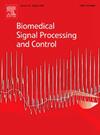DMF-LP:通过使用扩散和拉普拉斯技术的多模态医学图像融合来提高图像质量
IF 4.9
2区 医学
Q1 ENGINEERING, BIOMEDICAL
引用次数: 0
摘要
多模态医学图像融合技术在医学诊断和治疗中具有重要意义。现有的融合方法在处理不同模态的医学图像时,往往难以有效地保留和融合源图像的纹理信息和特征,导致融合结果在视觉性能和定量评估方面存在明显不足。为了解决这一问题,本文提出了一种多模态医学图像扩散融合模型,称为DMF-LP。DMF-LP在模型前向扩散阶段设计LP-F模块,对源图像对进行预融合,用于提取和保留源图像的纹理信息和特征。此外,为了优化扩散模型的训练过程,本文将信息熵理论融入到传统的损失函数中,构建了多目标损失函数,用于提高模型对医疗信息的利用率,优化融合效果。实验表明,DMF-LP在关键指标上优于最先进的方法:SSIM(0.912±0.011,DDFM为0.897±0.063)、PSNR(34.416±0.568 dB, DDFM为34.166±1.093 dB)和CC(0.980±0.001,DDFM为0.976±0.006)。值得注意的是,DMF-LP在SSIM方面比传统的基于cnn的方法提高了15.6%(0.912对0.869)。同时,融合后的图像保持了视觉细节,结构清晰度较高,证明了DMF-LP方法的有效性。代码可从https://gitee.com/tan-xueping/DMF-LP获得。本文章由计算机程序翻译,如有差异,请以英文原文为准。
DMF-LP: Enhancing image quality through multimodal medical image fusion using diffusion and Laplacian techniques
Multimodal medical image fusion techniques are of great significance in medical diagnosis and treatment. Existing fusion methods are often difficult to effectively retain and integrate the texture information and features of the source images when dealing with medical images of different modalities, leading to obvious deficiencies in the visual performance and quantitative assessment of the fusion results. To address this problem, this paper proposes a multimodal medical image diffusion fusion model, referred to as DMF-LP. DMF-LP designs a LP-F module before the forward diffusion stage of the model, which performs pre-fusion of the source image pairs, and is used to extract and retain the texture information and features of the source images. In addition, in order to optimize the diffusion model training process, this paper incorporates the information entropy theory into the traditional loss function and constructs a multi-objective loss function, which is used to improve the model’s utilization of medical information and optimize the fusion effect. Experiments demonstrate that DMF-LP outperforms state-of-the-art methods across key metrics: SSIM (0.912 ± 0.011 vs. 0.897 ± 0.063 for DDFM), PSNR (34.416 ± 0.568 dB vs. 34.166 ± 1.093 dB for DDFM), and CC (0.980 ± 0.001 vs. 0.976 ± 0.006 for DDFM). Notably, DMF-LP achieves a 15.6% improvement in SSIM over traditional CNN-based approaches (0.912 vs. 0.869). At the same time, the final fused image maintains visual details and has high structural clarity, which proves the effectiveness of the DMF-LP method. Code is available at https://gitee.com/tan-xueping/DMF-LP.
求助全文
通过发布文献求助,成功后即可免费获取论文全文。
去求助
来源期刊

Biomedical Signal Processing and Control
工程技术-工程:生物医学
CiteScore
9.80
自引率
13.70%
发文量
822
审稿时长
4 months
期刊介绍:
Biomedical Signal Processing and Control aims to provide a cross-disciplinary international forum for the interchange of information on research in the measurement and analysis of signals and images in clinical medicine and the biological sciences. Emphasis is placed on contributions dealing with the practical, applications-led research on the use of methods and devices in clinical diagnosis, patient monitoring and management.
Biomedical Signal Processing and Control reflects the main areas in which these methods are being used and developed at the interface of both engineering and clinical science. The scope of the journal is defined to include relevant review papers, technical notes, short communications and letters. Tutorial papers and special issues will also be published.
 求助内容:
求助内容: 应助结果提醒方式:
应助结果提醒方式:


